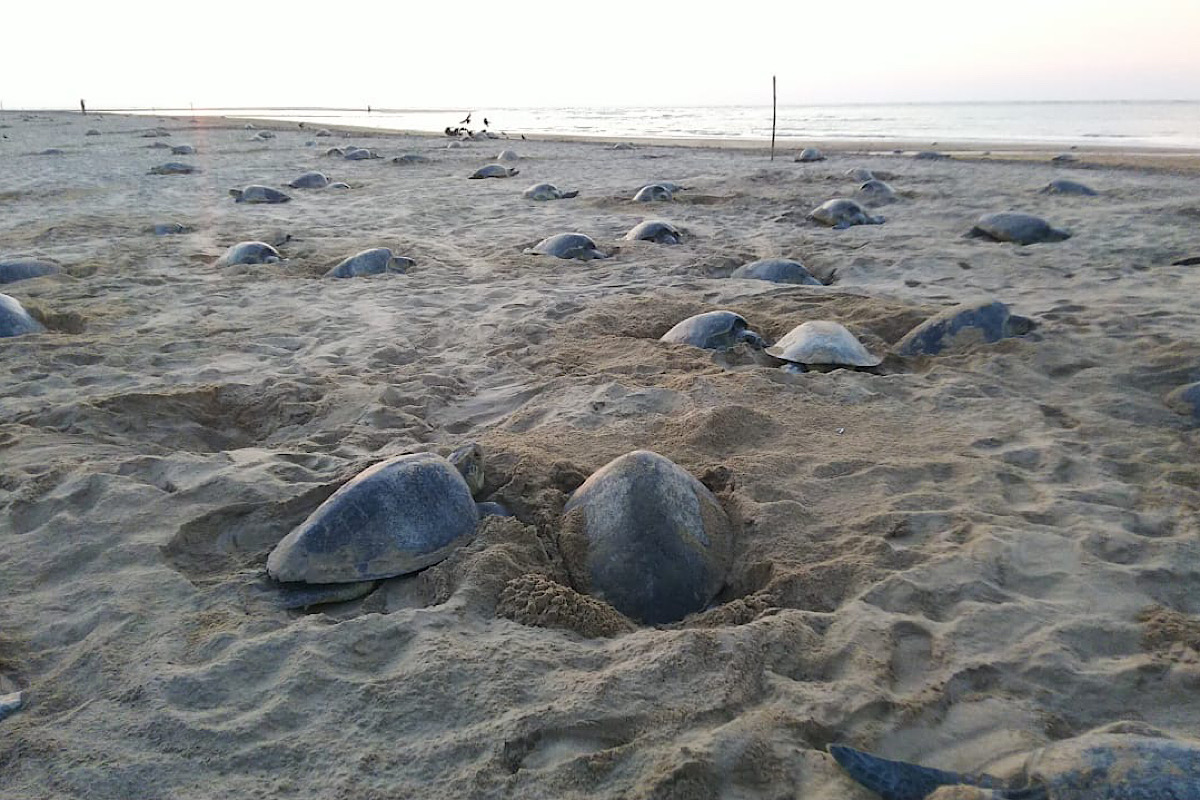With the coastal State attracting millions of endangered olive ridley sea turtles every year and housing the world’s largest-known nesting ground of these species at Gahirmatha, the Odisha Government has moved to ensure the safety of these heritage marine creatures by adopting a slew of conservation measures.
The Departments of Forest and Environment, Fisheries and Animal Resource Development, police, marine police, coast guard and port authorities in Odisha coast are on the job in cohesion at the ground level in conservation and nurturing of the olive ridley as a precious treasure of the nature, Chief Secretary PK Jena, who presided over a high-powered meeting recently said.
It may be noted here that as many as 11.49 lakh turtles had turned up at the nesting beaches at Gahirmatha and Rushikulya river mouth to lay egg en-masse in February-March this year. The turtles are expected to invade the beaches next year for mass nesting otherwise called ‘arribada’, a Spanish term.
Advertisement
The Coast Guard has been requested to have real time intelligence sharing with the departments about any illegal fishing. The institutions like DRDO, Dhamra Port, Gopalpur Port and Paradip port authorities have also been requested to extend cooperation to follow the black-out practices and light deeming to save turtles from possible delusion. The port authorities have also been asked to provide necessary support for joint patrolling in the sea and berthing of the vessels, he said.
Five forest divisions have been equipped with five high speed boats, along with trawlers and support boats for intercepting illegal fishing activities in the turtle habitation zones.
Sixty six patrolling teams including 61 on-shore units have been constituted to nab the trawling operation, which is detrimental towards the breeding turtles. Turtles often perish either getting entangled in fishing nets or by being hit by the propellers of vessels, said officials.
Last year, 57 sea-worthy vessels were seized and 384 crews were arrested for unlawful fishing activity.
Berthing places would be set up at Barunei, Gupti, Sasanapeta and Krushnapriyapur and Rajnagar for safe custody of the seized vessels.
Each camp would be provided with VHF communication devices, mobile phones and required camping materials. There would be regular communication and intelligence sharing among the coast guard, patrolling ship, and various camps and marine police.
Armed police force would be deployed for patrolling and enforcement activities. Sporadic nesting activities of the turtles and their mortality would be monitored. Soon after mass nesting, the rookeries would be fenced to protect the nests and eggs. Patrolling along with watch and ward activities would be strengthened further.
The Gahirmatha rookery in Kendrapara district is widely acclaimed as the World’s largest beach of olive turtles. The Olive turtles turn up in millions for mass nesting along the Odisha coast every year anytime between February to March. Apart from Gahirmatha, these threatened aquatic animals turn up at Rushikulya river mouth and Devi river mouth for mass nesting.
An olive ridley usually lays about 120 to 150 eggs from which hatchlings emerge after about 45 to 50 days.











